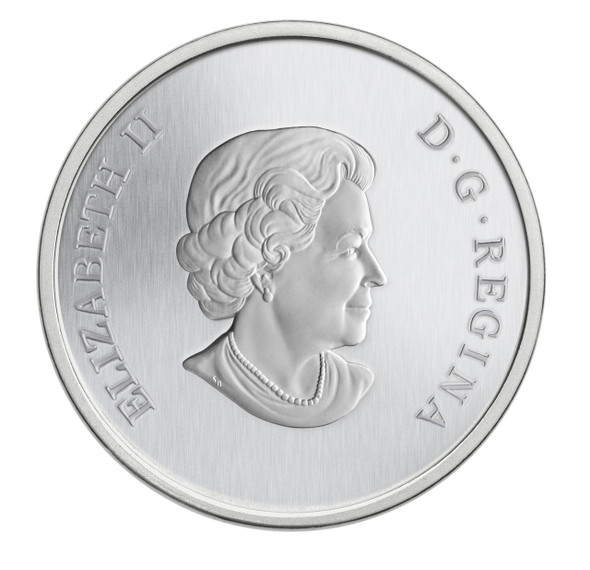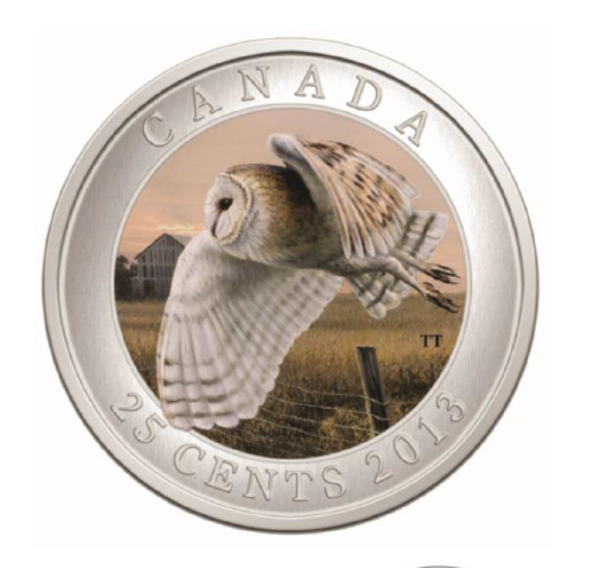Description
Theme:
This exceptionally beautiful coin is the third coin in the Royal Canadian Mint’s sought-after series featuring engraved and painted Canadian flora with insects.
Description:
The central field of this 35-millimetre coloured cupronickel coin designed by Canadian artist Maurice Gervais centres on a stunningly rendered Purple Coneflower (Echinacea purpurea) bloom. The engraved and painted flower’s instantly recognizable red-orange tubiflora centre and bright purple petals sit atop a realistic green stem with two smooth leaves. An engraved and painted Eastern Tailed Blue perches on the flower’s lower right petals, its dark purple-blue wings rendered in matchless detail, with their distinctive black and white outlining and orange dots at the base of each hind wing. The reverse’s outer ring features the word “CANADA,” the date “2013,” and the face value of “25 CENTS.” The obverse features the effigy of Her Majesty Queen Elizabeth II by Susanna Blunt.
Special features:
- This is the third coin in a series of world-renowned Royal Canadian Mint coins featuring insects on beautifully engraved and painted flowers native to Canada.
- This engraved and painted coin showcases a beautiful purple coneflower sharing its pollen with an intricately detailed Eastern Tailed Blue butterfly.
- Affordable cupronickel version of its pure silver with glass counterpart.
- A fantastic collector’s item as well as a unique and beautiful one-of-a-kind gift to commemorate a birthday, holiday, graduation, the coming of spring, or other special occasion.
- An excellent collectible for nature lovers, wildflower enthusiasts, conservationists, and lovers of Canadiana.
Product specifications:
Face Value: 25 cents
Mintage: 17,500
Composition: Cupronickel
Diameter (mm): 35
Edge: Plain
Finish: Specimen with colour
Certificate: Serialized
Artist: Maurice Gervais
Advertising Date: April 2, 2013
Launch Date: April 9, 2013
Packaging:
Coin is encapsulated and presented in a Royal Canadian Mint branded maroon clamshell case lined with black flock and protected by a black sleeve.
Finished size: 67 mm x 67 mm
Complete certificate text:
Natural Wonders: 2013 Purple Coneflower and Eastern Tailed Blue
One of Canada’s smallest and loveliest natural works of art, the Eastern Tailed Blue (Cupido comyntas) has a wingspan of 16 to 26 millimetres and is found across southeastern Canada, from New Brunswick to southeastern Saskatchewan. With its short proboscis and low flight, the Eastern Tailed Blue looks for relatively low-growing flowers whose nectar is easy to access.
This pretty member of the family Lycaenidae is strikingly coloured. Males have iridescent purple-blue upper wings outlined in black and white that may bear one or more orange spots at the base of the hind wings. Females have dark brown wings that are blue at the base in springtime broods. Both sexes have soft gray underwings and a single small “tail” jutting out from each of their hind wings. An almost identical species, the Western Tailed Blue (Cupido amyntula), is widespread across western and boreal Canada.
Like many butterflies, the Eastern Tailed Blue is a pollinator whose symbiotic relationship with plants is essential to the survival of both species. One of the Eastern Tailed Blue’s favourite flowering plants is the Purple Coneflower (Echinacea purpurea), a hearty North American native perennial that is found throughout Zones 3 through 8. Depending on the location, it will begin blooming late June and continue into early fall.
The Purple Coneflower is in many ways an ideal plant for butterflies. Its Latin genus originates with the Greek word for “hedgehog” and refers to the centre of its flower, which is composed of hard, short orange-red nectar-filled tubiflora that are reminiscent of a hedgehog’s quills. Around the base of this spiky bed of florets is a ring of long (averaging approximately 50 millimetres) reddish-purple petals that provide an excellent resting spot for an insect that must perch in order to feed. The plant itself grows to a height of about 1.5 metres at maturity, although a number of varieties are cultivated to grow closer to the ground.
Because it is easy to grow and maintain, and so attractive to beautiful butterflies like the Eastern Tailed Blue, the Purple Cornflower is a favourite among Canadian gardeners.
















